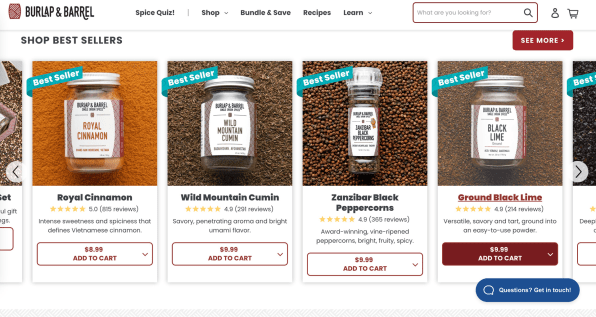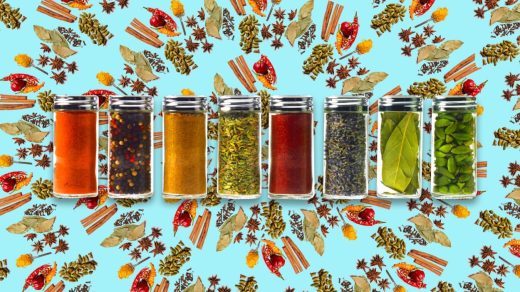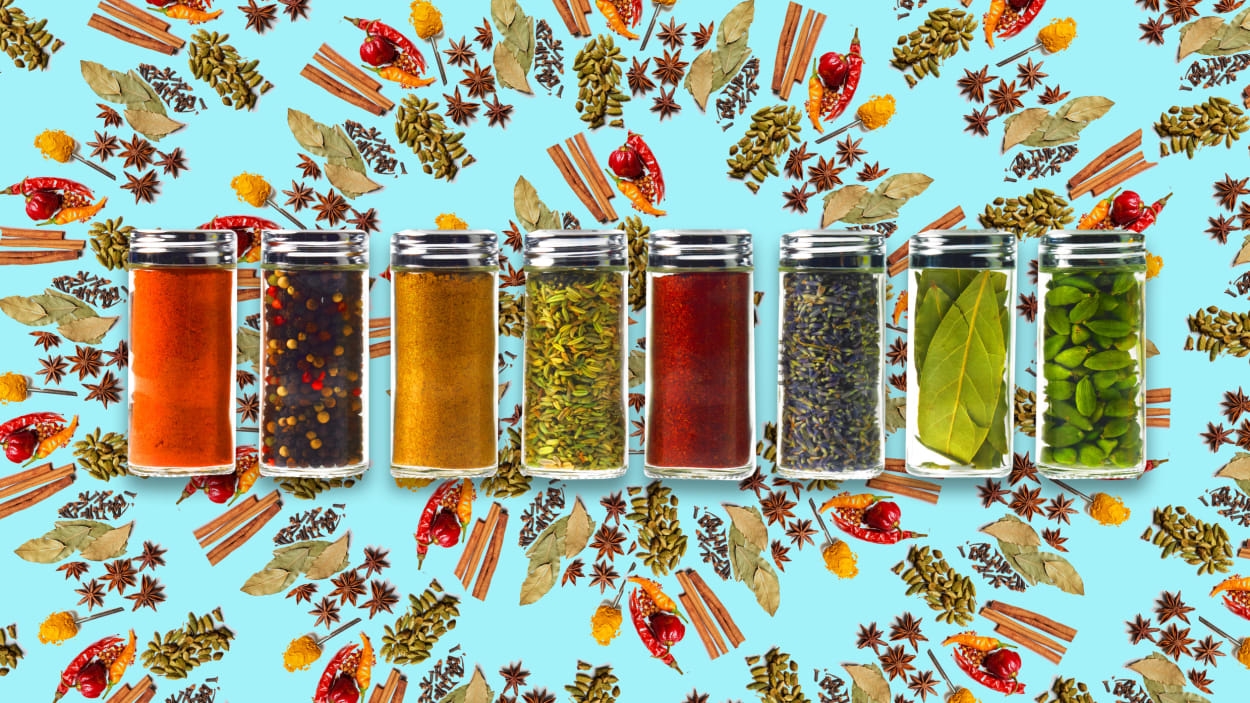How Burlap & Barrel is shaking up the spice industry
By Francine Maroukian
Like a good buddy movie, the single-origin spice company Burlap & Barrel started with two friends on a mission: Cofounders Ethan Frisch and Ori Zohar decided it was time to change our thinking about the culture of spices by revealing exactly what goes into those sealed jars.
“Historically American home cooking has always reflected a variety of global influences, and spices have always been part of our kitchens,” says Zohar, born in Israel but raised in Baltimore, home to Old Bay, America’s iconic spice mix. “But we could see budding curiosity about where and how those spices are grown and processed, a natural evolution of interest in the provenance of basics like wine, olive oil, and coffee.”
In the few years leading up to the company’s launch, Frisch, a chef who also holds a master’s degree in violence, conflict, and development from the University of London School of Oriental and African Studies, was working on an infrastructure building project in Afghanistan. Coming home to visit, he always brought a duffel bag of spices, the most notable being Badakhshan cumin, a wild, black variety grown and foraged only in the Hindu Kush mountains.
At this point the friends weren’t thinking about selling the spices, just sharing them. But the response was so strong, they recognized the business potential. “People want quality products across their pantries, with a connection to the origin of those products, and we could see it was time for better spices,” Frisch says.
Unlike mass-produced supermarket spice brands that necessitate stockpiling huge quantities sourced from many different growers/countries, Burlap & Barrel provides cooks with single-origin spices, traceable to only one production location, such as a specific farm or farmer cooperative, typically visited by one or both of the cofounders.

And the difference goes way beyond better flavor: Mass-produced brands lack origin information, including the possibilities of harmful environmental practices, whether pesticides might be used and in what combinations, or how long the spices have been warehoused before processing and distribution, which can take years. But every jar of Burlap & Barrel spices offers radical transparency, including the cultural, environmental, and economic principles of production.
By making a face-to-face connection with farming partners, Frisch and Zohar have firsthand cultivation knowledge, and their interaction on the land where the spices grow results in direct supply, without long-term warehousing or ingredient interference.
During the 2020 lockdown shopping restrictions due to COVID-19, Burlap & Barrel experienced a business bump, like many other direct-to-consumer pantry products. “While we lost almost all our restaurant revenue (50% of total sales in 2019), our DTC site sales increased tenfold, growing our overall business by a factor of five,” Zohar says. “Things quickly flipped for us from ‘Oh no, we’re going to run out of business,’ to ‘Oh no, we’re going to run out of spices.’”
The partners spent 2020 repacking their restaurant-size containers into glass jars for home cooks, putting spices on airplanes for speedier arrival, and kicking off a domestic spice program with farmers in America (fostering supply potential).
Another test came in 2021 when many companies saw e-commerce drop as supply chains backed up and consumers resumed in-person shopping habits. So the cofounders focused on holding on to the new customers who were introduced to their spices during those long days when no one wanted to step foot inside a grocery store.
“We added new spices and collaborations to our lineup at a furious pace, personally emailed all our new customers to see what they thought, and updated our site to make it easier to find spices and learn what to do with them,” Frisch says. By building its own supply chains, Burlap & Barrel maintains a competitive advantage by being able to keep the freshest spices in stock.
The partners acknowledge that getting customers to come back for a second order is critical in any business, and that’s where their work has paid off. “Sixty percent of our customers placed a second order on their way to becoming regulars, and we grew significantly: $600,000 in 2019 to $3 million in 2020 to $5.1 million in 2021. And we are on track to keep it going in 2023,” Zohar says, with Frisch adding: “In terms of expanding our business, COVID did for us what VC money does for other companies.”
Looking for other ways to continue expanding, in Spring 2023 the partners went on Shark Tank—a suggestion from Zohar’s mother, a fan of the show. While the partners did not secure funding, Frisch says, “It was an incredible opportunity to introduce our spices and business model to an audience of more than 4 million people. We knew we had to make the most of our appearance, not only by pitching our business to the Sharks but also by pitching everyone watching at home on how better spices can fundamentally improve their day-to-day cooking. We had a blast sparring with the Sharks, and were thrilled to watch the thousands of orders roll in.”
According to Zohar, the current challenge is figuring out how a small company without investors can build a long-term business through distributors and retailers.
“Our website has been the core of our business, which we’ve been able to grow profitably every year. But for any food business to reach eight or nine figures in revenue, it must involve winning over customers at the supermarket,” he says. “It’s like navigating an obstacle course because supermarkets and distributors seem to rely on fees and chargebacks to the brand to make their money. This has created a painfully backward incentive structure and may be the reason why the industry is dominated by huge conglomerates. We’re very much in the middle of the process and haven’t figured it out yet, but we’re scrappy and trying to find a way to do it that will actually work.”
What is working for Burlap & Barrel’s growth is recognizing who their target customers are. “We’re always hearing about food trends on TikTok, or what Gen Z is thinking about food. You know who isn’t getting enough attention? Middle-aged women,” Zohar says.
“They’re the real drivers of food innovation for three reasons,” he continues. “One, purchasing power: Their kids are grown, they have their time back, and they have disposable income. Two, cooking expertise: They’ve got two to three decades of cooking expertise under their belt. They know what they want and they’re more confident cooks, so they’re more open to trying out new flavors and products. And three, cooking frequency: They’re cooking most of their own meals and leaning in to the pantry ingredients, including spices, every day. It’s not a fad; it’s a way of life.”
And here, Frisch and Zohar have some advice for other food company founders: “Don’t be surprised if your customer is older than you think. Want proof? Almost 10% of ours have an aol.com or hotmail.com email address.”
Francine Maroukian, a two-time James Beard Award winner, is a former food and travel writer-turned-commercial-pragmatist who now works as an operative researcher for C-suite executives in big retail.
(14)



